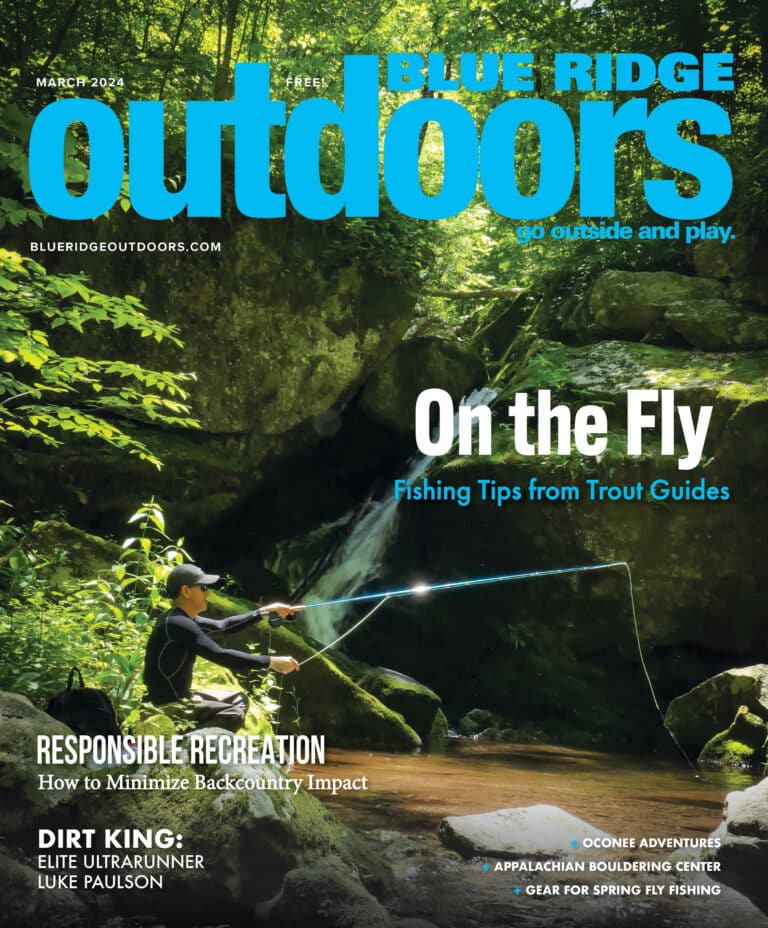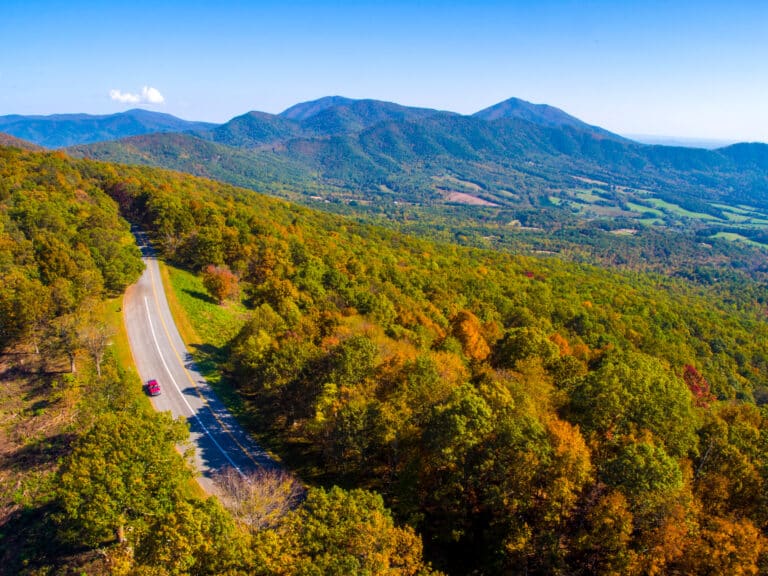Anthony Famiglietti’s job is to win races. The two-time Olympic steeplechaser and current 5K national champion gets paid money to run faster than other people. He is one of only a handful of runners who can win enough races to make ends meet. It’s a hard reality that has turned the profession of running into a feast for a select few household names (Webb, Kastor, Karnazes) and a famine for the thousands of others who struggle for a piece of the tiny professional running pie. For most, running professionally is a grueling life of 90-mile training weeks, brutal travel, and paltry financial returns. “If you let a Kenyan get a jump on you, you’re not going to close that gap,” Famiglietti says from his house outside of Knoxville, Tennessee. He’s talking about the Olympic finals in Beijing, when he broke away from the pack and injected a shot of adrenaline into what to that point had been a very controlled, reserved race. “The pack was running slow. With a few laps to go, I ran to the front. I led for a lap, but I was so fatigued from the drama of the Olympics, I couldn’t keep it up. The gold medal was only a couple of laps away, but my body collapsed.”
Famiglietti finished 13th in the 2008 Olympic finals for the Steeplechase – a niche track event that includes hurdles, walls and water traps. It was his second Olympic appearance, a feat that propels Famiglietti, or “Fam” as his fans call him, into a select group of runners. In the world of professional running, there are Olympians, and then there’s everyone else trying to become Olympians.
“The Olympics is the goal of every professional runner,” says Zika Rea, an Olympic Trials qualifier in the marathon and founder of ZAP Fitness, a training facility for professional runners in Blowing Rock, N.C. “There are other goals along the way, but the Olympics is the big one. Once you’ve been in the Olympics, it’s a different world.”
Beyond the glory of running for your country, the Olympics often brings with it certain financial awards for professional runners, mainly in the form of sponsorship dollars. There are a lot of “sponsored” professional runners in America, but there’s a vast difference between being “sponsored” and being able to pay your bills with sponsorship money. For most runners, having a sponsorship means nothing more than getting free shoes. At $100 a pop, free shoes is nothing to sneeze at, particularly when you’re running 90 miles a week and your shoes run thin in a month. But it’s hard to eat shoes and very few landlords will accept Nikes in lieu of rent money. Some lucky runners will get a travel stipend of maybe $2,000 from their main sponsor, which goes quickly when you’re traveling to California or Boston for the big races that your sponsors expect you to race (and do well) in. Win a national championship in a distance like the mile or marathon, and you’ll start to see some decent cash. That’s when the companies like Nike and New Balance knock on your door with $20,000 sponsorship deals. But only one runner can be the 5K National Champion in a given year.
“Being a professional runner comes down to winning prize money or getting a sneaker deal,” Famiglietti says, although relying on prize money isn’t the smartest financial plan. The first place winner at any given distance at the US Olympic Trials in 2008 pulled down a whopping $4,000. Most prize purses for first place winners don’t make it into the five figures, which leaves only sponsorship money to support the running habit. And the chances of landing a $20,000 shoe contract are slim.
“It’s very difficult to make a living as a runner,” says Ray Flynn, owner of Flynn Sports, a management company that represents most of the top runners in the U.S. “Most of the sponsorships go to one person in each distance, and only runners in key distances like the 100 meters, the mile, and the marathon will see large paychecks.”
It’s a reality that leaves 99 percent of elite runners with Olympic dreams wondering who is going to pay the rent, not to mention their health insurance and travel expenses.
Many other countries competing on the international level offer state funding to their elite runners, which includes rent, health insurance, coaches, and gear. The U.S. offers no such funding. The U.S. Track and Field Association (USATF) has created distance running grants to help support fledgling runners, but the grants are in the $4,000 range and are only meant to supplement a runner’s training. The NCAA serves as a bubble for runners to train and develop, but once your four years of competition are up, you’re on your own. Win an NCAA championship and you’ll get sponsorship money as soon as a diploma is in your hands. But winning an NCAA championship is almost as difficult as making the Olympic team.
“If you run a 13:30 5K in college, you’ll get a sponsorship,” says Rea. “If you run a 13:40 in college, you’ll miss that sponsorship.”
Most runners simply quit if they don’t get the sponsorship deal immediately out of college. They become lawyers, teachers, mail carriers, and mortgage brokers.
“You have to consider the opportunity costs of a running career,” Flynn says. “You don’t have a 401(k) as a runner. You don’t have an insurance plan. You’re 24, out of school, and everyone else is starting their career, establishing a life.”
A dedicated few, however, can’t give up running. They may not have won the NCAA championship, and they may not have a shoe deal out of college, but they believe they can still reach the Olympic level, if they just have the opportunity to train.
“There’s hope after college,” Rea says. “A lot of college athletes have potential but don’t reach it during their four years of school. There’s still plenty of athletic development that can happen out of college.”
Famiglietti was one of those athletes who didn’t land the big shoe deal out of college, and was forced to ask himself the all-important question: Do I sacrifice financial security and a career to pursue my dream of running?
“I was the kid in high school who didn’t even qualify for the Footlocker Cross Country Championships,” Famiglietti says. “I got told by a lot of colleges that I wasn’t good enough. I was never an NCAA champion. I wasn’t supposed to amount to anything athletically. But still, I had confidence in my own ability, so I made big sacrifices to pursue this career.”
After college, Famiglietti signed a small sponsorship deal and focused his energies and money on training. Strapped for cash before a key championship road race in 2002, Famiglietti reached a tipping point. He had just enough cash to either travel to Flagstaff for a month of high-altitude training, or pay his rent. He could do one or the other, but he couldn’t do both.
“My financial situation got so bad, I could only eat Pop Tarts and mac and cheese,” Famiglietti says. “Junk food is cheap, but I was training for an 8K championship race, trying to compete with guys who had dieticians and trained at altitude all year long. I gambled. Instead of paying rent, I decided to train at altitude. I showed up in Flagstaff with nothing but a pillowcase full of clothes.
It was a gamble that paid off. Famiglietti got third at the 8K championship, a finish that began to open doors. In 2007, Fam went back to that same 8K championship race and won it after training at the same high-elevation running camp in Flagstaff. Fam says it was one of the most satisfying victories of his career, having come full circle from an undernourished underdog to a well-sponsored Olympian. In 2008, Famiglietti was the only American distance runner to qualify for the Olympic Trials with an “A” standard in five different distances.
Many runners, hoping to reach a similar breakthrough without sacrificing a career, will try to hold down a full-time job while training for elite competitions. It’s a frenzied lifestyle that doesn’t lend itself to peak performance and often leads to early burn out. Some runners, hoping for Famiglietti’s happy ending, will make a similar gamble. They’ll eschew 9-to-5 careers and max out their credit cards for years on end in order to train and race full time.
“They’re so desperate, so hungry, they have to make it happen,” says Rea. “People watch the Olympics or the Trials, and they think these athletes just showed up and made the team. They have no idea that these runners have been fighting for years, living on couches.”
In order to bridge the gap between college security and Olympic glory, Rea founded ZAP Fitness, a non-profit training facility on 65 acres near Blowing Rock, N.C. Each year, ZAP sponsors eight to ten runners with Olympic dreams, providing housing, food, travel expenses, gear, access to elite coaching, race fees, health insurance -everything a professional runner needs to compete at the top level. There’s a training facility, a dorm-room type lodge, and two separate houses, all of which is surrounded by a half-mile trail, with miles of singletrack just beyond campus. The athletes do the basic maintenance and upkeep of the facility, and are also expected to be available to running camp guests (think Fantasy Camp for back-of-the packers).
“The whole idea of ZAP was to give athletes an opportunity to continue in the sport, especially the second-tier runners who aren’t getting the big sponsorships that allow them to train full time,” Rea says. “We figured if the government wasn’t going to fund Olympic hopefuls, then we’ll fund them.”
Rea estimates it costs $25,000 to sponsor one ZAP athlete for one year, a price tag that allows a handful of runners to eat, sleep, and breathe running.
“I wouldn’t be able to do what I’m doing without ZAP,” says David Nightingale, a 23-year-old ZAP athlete with a degree from Princeton who passed up a career in business to run full time. “At ZAP, I don’t have to worry about anything but running. Everything else is taken care of.”
Nightingale runs an average of 90 miles a week, usually logging two runs a day as well as additional drills and core work scattered throughout the week. He races twice a month, traveling all over the country to compete in high-profile competitions that attract the nation’s top runners. He also mows the lawn at ZAP, does the dishes, clears brush, and cooks dinner twice a week for his fellow ZAP teammates. It’s all part of the deal when you train at ZAP, which is essentially a running commune where athletes live and breathe the same goal: competing in the 2012 Olympics.
The qualifying standard in the 5K is 13:21. Nightingale’s best time is 13:49. To a non-runner, those times are essentially the same, but to Nightingale and other 5K speedsters, those 28 seconds represent an eternity of training and sacrifice. “I always have 13:21 in the back of my head,” says Nightingale. That’s where I need to be in four years.”
There are only two other facilities in the U.S. like ZAP. In spite of the communal living and household chores, being able to train stress free at ZAP is as much of an honor as making the Olympic team for many.
“This is living the dream,” says Jessica Minty, ZAP’s newest athlete. “ZAP is a runner’s utopia.”
Minty gave up a lucrative career as an economic consultant in order to live the dream at ZAP. She was living in Boston, working more than 100 hours a week and still trying to run 80 miles a week and race on weekends. The 24-year-old was making good money in her career and doing well in the races she entered, but felt she wasn’t running at her best.
“I needed to make running my job, to see what I could do when I put my whole self into it,” Minty says. “I’ve dreamed of running in the Olympics since I was little. ZAP is one step closer to that dream. Money is money, but being able to realize your dreams? How much is that worth?”
Even though Minty and her fellow ZAP athletes are one step closer to their Olympic dreams and financial security as professional runners, the harsh reality is that most of them will not make the 2012 Olympic team. For every runner success story like Famiglietti, there are hundreds of others who eventually have to come to terms with the fact that they will never make it as professional runners.
“Most people leave ZAP because of money,” Rea says. “There’s constant pressure. Runners are always asking themselves, ‘Why am I doing this?’ At the end of the year, or at the end of ten years, you ask yourself, ‘Was that a big waste of time?’ Running full time after college for a year or two, it’s kind of cool. But the next thing you know, you’re 24, and your friends have careers, and money, and a house. You’re living in someone’s basement, making $10,000 a year. You’re falling behind what other people are doing. Is it worth it?”
The lack of financial opportunities available to runners is doing more damage than just squelching individual Olympic dreams. It also limits the number of runners who can train full time and inevitably handicaps the depth and quality of competition in American distance running. Year after year, the athletes who do best in distance events are the runners with state funding. More financial reward in American professional running would elevate both the quantity and quality of athletes. In order to attract more sponsorship money to running, some have suggested modeling the sport after NASCAR.
“You could create a Budweiser team that competes against a Home Depot team,” Rea says. “More corporations would get involved and more runners would have the opportunity to run full time.”
The financial state of running isn’t likely to change any time soon. Even though running is arguably the most popular sport from a participation level, it doesn’t have the built-in fan base that team sports enjoy in this country. And even the biggest races -like the Boston Marathon – aren’t televised nationally. With limited exposure, what’s the appeal to a sponsor?
But lack of sponsorship dollars isn’t always a bad thing. It didn’t keep Famiglietti from reaching his dreams, and he doesn’t think the lack of money will keep the most dedicated runners from pursuing their own Olympic ambitions.
“The current situation in running forces you to be introspective. You have to ask yourself, ‘Am I trying to make money, or am I doing this for some other reason?'” Fam says. “Anyone who runs professionally is doing it because they love it. They’re going to make the sacrifices necessary because it’s who they are. The truth is, we’d do it for free if we had to.”











